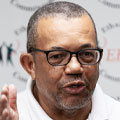THE political culture of the CARICOM nations is necessarily responsive rather than proactive. We have shifted little in active creative and new initiatives since the visionary creation of CARICOM in 1972. The category of citizens that have suffered the most especially in Guyana is its creative souls. To quote columnist David Jessup Stabroek January 5, 2014, he related the following: “The Caribbean is not short of ideas. Week after week, meetings take place; reports are published; regional initiatives are announced; speeches are made, columns written, and papers presented. From time to time, the region’s elder statesmen speak from experience, with passion and eloquence about the role of Caribbean identity. Despite this, the thoughts are not embraced; the words go unactioned, the concept of region as a unified entity diminishes, and the gulf between the dream and reality is widening.”
Another reference closer to the identified group is necessary to compound the presentation of this article.I must refer readers to the letter by the lawyer Abiola Inniss, the leading researcher, analyst and writer for almost a decade in the field of Caribbean Intellectual Property Law and policy, cataloguing the laws and policies related to Intellectual property rights within the CARICOM states and their relationships to international IP platforms.
Her conclusion is that “Policy-makers in CARICOM struggle to understand the economic concepts which are relevant to intellectual property rights and how policies can be created which can help to utilise these legal mechanisms for their benefit.” For talented persons with an economic interest in the copyright discourse, her blog is a must source of information. Today in Guyana we can compare the national political and social commentary about the closure of some Sugar estates in contrast to the decades-old recognition that this was an inevitable outcome to which the union [GAWU] and the political party of the sugar workers [the PPP] did nothing to deflect, because of an inherited cold war political cultic philosophy rather than the economic reality.
The mass collapse of industries happened before, at Linden, the Water Front-Stevedores, Civil Service, during the late 70s and early 80s, thousands lost their incomes. They too had families, they didn’t commit suicide, but many died from hypertension and alcohol abuse- I witnessed that. I should add that they were mainly Afro-Guyanese, with no unions, Private Sector sympathies, social commentators or then-opposition voices which were so abundantly heard. I was redeployed from GRB, but my passion and extracurricular efforts in the Arts enabled me to gain employment via training for a stipend, that kept me barely alive, but I remained inspired because a stage was provided for artistic engagement with rewards, managed by professionals who understood what you were saying. The years following the death of President Forbes Burnham, and his Caribbean counterparts, so faded the artistic pre-post independence generation, ushering in the strange inept leadership that both Abiola Inniss and David Jessup is referring to.
Guyana retrogressed from around 1995. But it was the arts and its serious practitioners among whom my present career was founded, that suffered the most from mainly 1993 to 2014 with some encouraging possibilities over the last two years. Creative material and its potential remained at the private expression of those gladly enslaved by the muse, but not expedited as the lucrative trade of ideas across CARICOM through books for children and young adults etc.
Retrogression became the order of the day when I bought a bad photocopy of a school book for my youngest, that was developed in colour by the curriculum development in the late 70s under the supervision of Oswald Kendall, to then enter the surreal as the government after the Millennium decided that copyright was nonsense and that they would steal intellectual property and condemn the creative community to poverty. The Private Sector condemned the violation of the International Copyright owners who were violated but never raised a voice for the local creative community. On one hand a section of the Guyana state paid Neyo the American artiste in 2012, US$250,000 for one hour [see Freddie Kissoon’s column, Wednesday, September 26, 2012, the column was never contested by the state. On the other hand when I had requested to see the Minister Frank Anthony and he avoided me until I ran into him exiting the women’s exhibition at Castellani house, his brief response was, for my work I wanted to be paid a lot of money. This is a mentality that a generation grew up witnessing. On another time he had pointed to a mural at the Umana Yana that was done by George Simon telling me that “George did it for free, you know.” 2018, I welcome the Budget idea of a creative centre or as an official and I whispered in agreement, rather a Cultural Industries secretariat, that should be peopled by persons who actually experienced the inner workings of the labyrinth that is the business of the Arts, and not just bodies.




.png)








